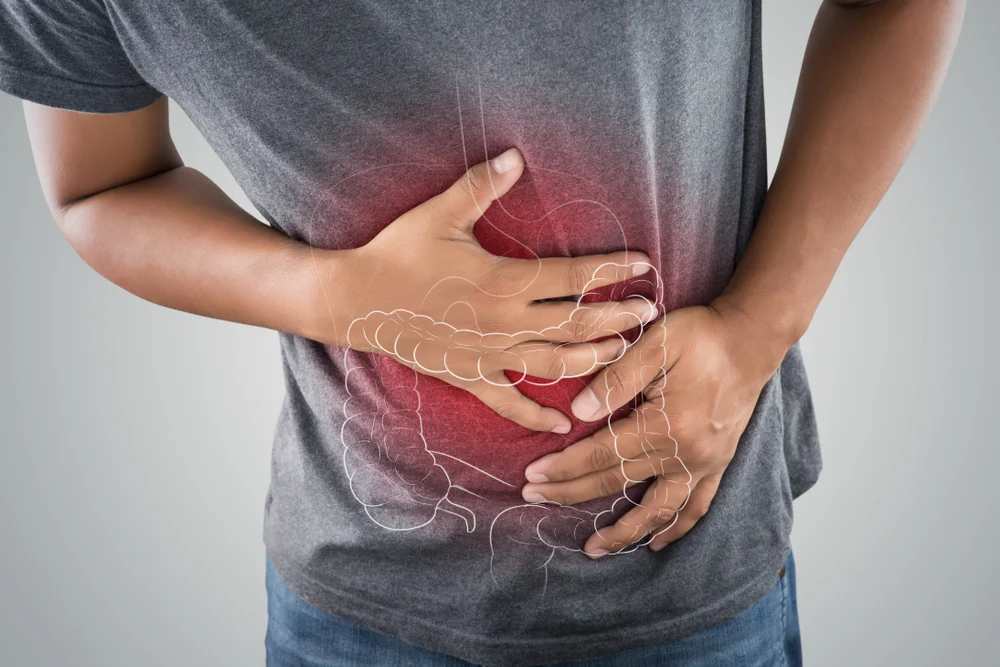Abdominal pain can be confusing and affects people differently, depending on the cause and location of the discomfort. Whether the pain feels sharp, dull, or cramp-like, understanding its types and locations provides valuable insight into potential causes. Pain in the upper-right quadrant might point to gallbladder issues, while lower-left discomfort could indicate a problem with the colon. Here’s some information about this type of pain and its causes:
Serious Causes
Certain conditions leading to abdominal pain must not be overlooked. Appendicitis happens when the appendix becomes inflamed, typically resulting in pain that starts around the navel and moves to the lower-right abdomen. If untreated, appendicitis could lead to severe complications. Similarly, pancreatitis arises from inflammation of the pancreas, characterized by symptoms such as pain that may radiate to the back. Gallstones, another typical issue, develop when hardened deposits form in the gallbladder, causing intense pain in the upper right abdomen.
Digestive Disorders
Several digestive conditions are associated with recurring abdominal pain. Irritable bowel syndrome (IBS) may cause cramping, bloating, and changes in stool frequency or appearance. Although not life-threatening, IBS detracts from the quality of life. Inflammatory bowel diseases (IBD) like Crohn’s disease and ulcerative colitis yield symptoms such as persistent pain, weight loss, and fatigue due to chronic inflammation in the digestive tract. Another issue, diverticulitis, occurs when small pouches in the colon lining become infected or inflamed, leading to significant lower abdominal discomfort.
Gynecological Issues
For women, certain gynecological problems contribute to abdominal pain. Endometriosis, a condition where tissue similar to the lining of the uterus grows outside of it, causes pelvic pain that worsens during menstruation. Pelvic inflammatory disease (PID), resulting from untreated infections, leads to pain accompanied by fever, abnormal discharge, and pain during intercourse. These conditions, if unchecked, could result in more complex reproductive health issues.
Urgent Situations
Knowing when abdominal pain signals an emergency is key to good health. Pain accompanied by fever, vomiting, bloody stools, or difficulty breathing should prompt immediate medical care. Similarly, if the pain is sudden, severe, or worsens progressively, it’s worth acting quickly. Ignoring these warning signs might delay treatment for underlying serious health concerns.
Diagnostic Tests and Procedures
To uncover the root cause of pain, healthcare providers rely on a range of diagnostic tools and techniques. Blood tests help identify issues such as infections or inflammation. Imaging tests, such as ultrasounds or CT scans, enable doctors to visualize the abdomen for abnormalities. Sometimes, an endoscopy or colonoscopy is used to evaluate the stomach, intestines, or colon. These procedures form part of a comprehensive approach to lead to an accurate diagnosis.
Find Help for Abdominal Pain
Taking steps to maintain overall gut health may prevent some pain triggers. Staying hydrated and eating a balanced diet rich in fiber may help support digestion. Avoiding excessive alcohol consumption and managing stress levels contributes to reducing discomfort. Regular physical activity promotes bowel movement and helps prevent constipation. Routine check-ups help detect potential issues early and aid in long-term wellness. If you’re experiencing unexplained or severe abdominal pain, reach out to a medical professional who can help you take the next steps to address the issue effectively.
